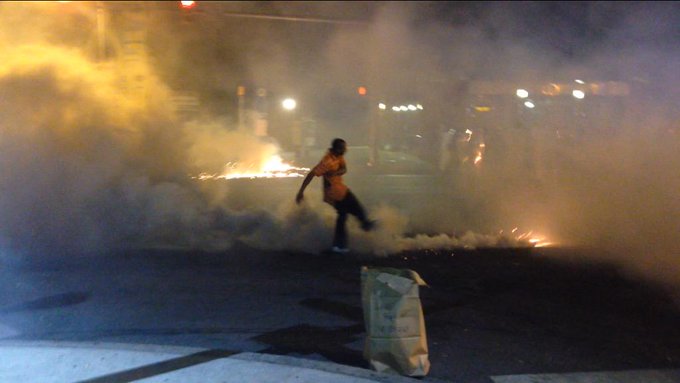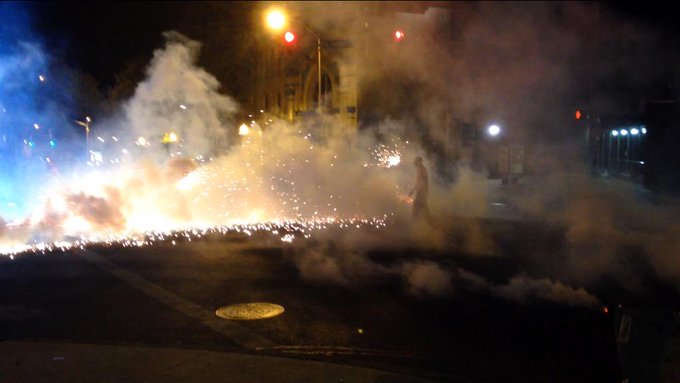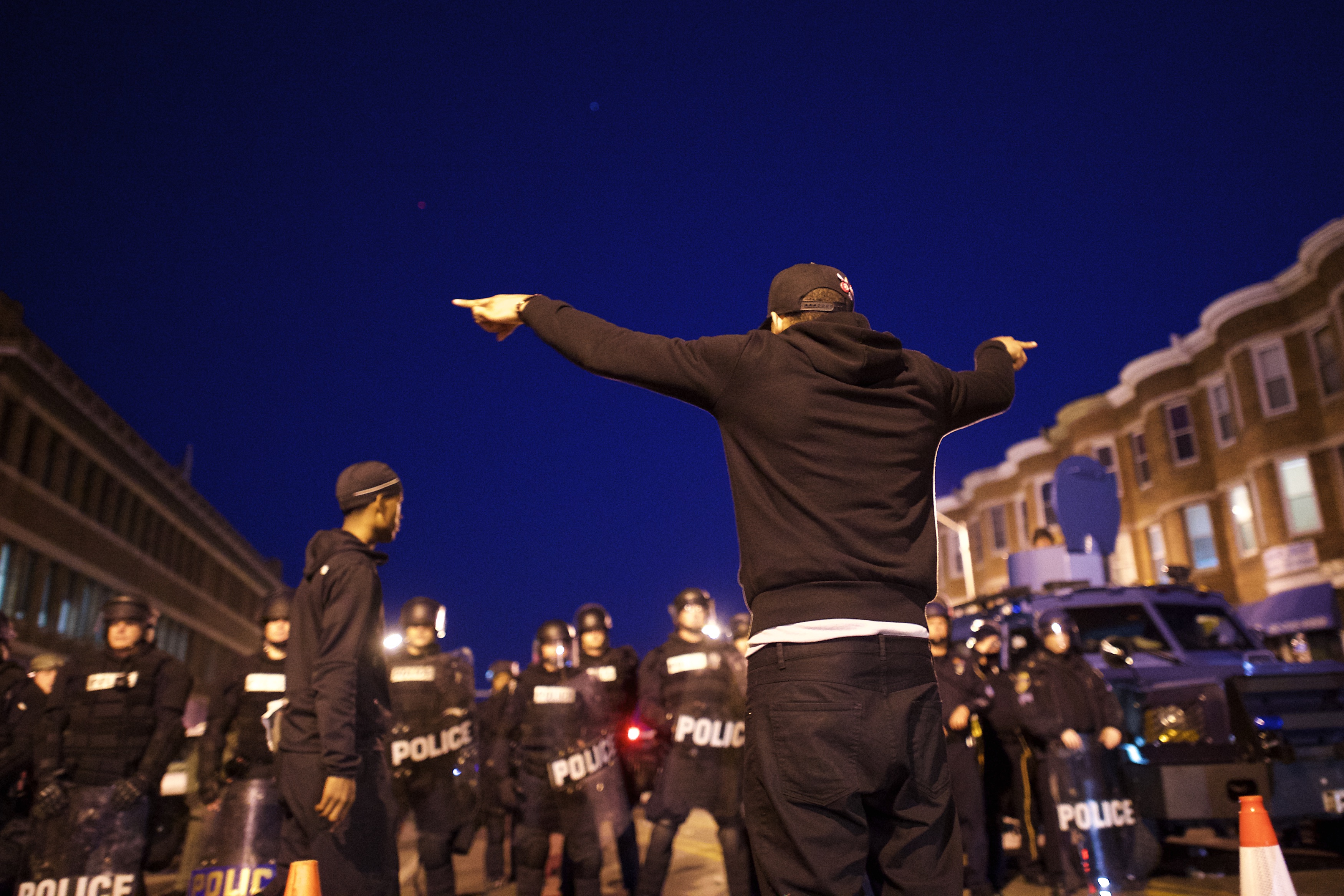
A protester faces off with police the night after citywide riots over the death of Freddie Gray on April 28, 2015 in Baltimore, Maryland. (Getty)
A citywide curfew has gone into effect in Baltimore one night after violent rioting and looting erupted in the city over the death of 25-year-old Freddie Gray.
Gray died April 19, a week after he was severely injured while in police custody. The investigation into Gray’s death is ongoing, but the city has grown more and more frustrated with the police department’s response.
The mood was peaceful throughout the day Tuesday after hundreds of city residents came out to help clean-up after the fires and vandalism that hit the city Monday afternoon and night.
Here’s what you need to know:
1. Many People Remained on the Street After the Curfew Went into Effect
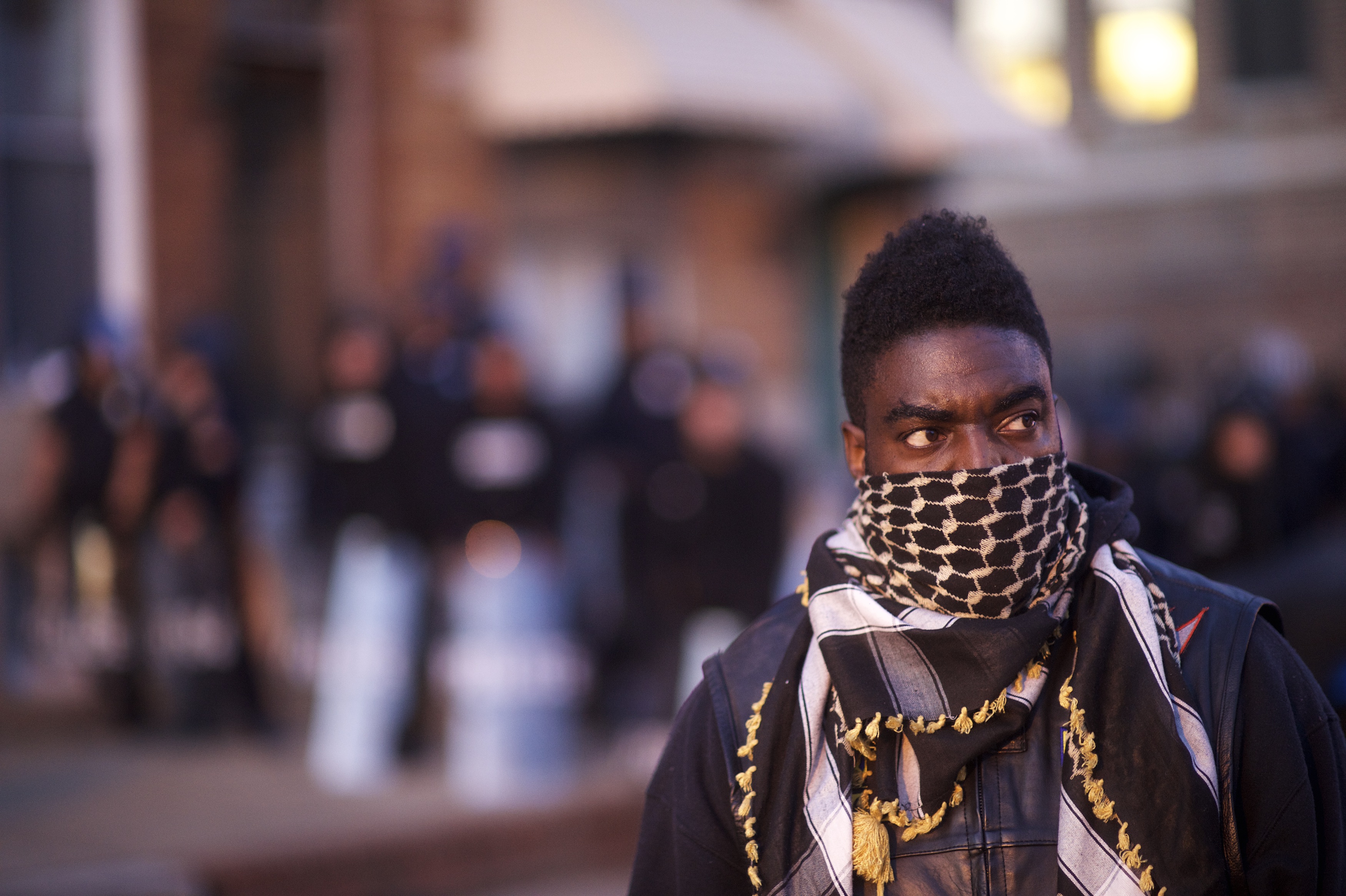
A motorcycle group formed a line in front of the Baltimore riot police the night after citywide riots on April 28, 2015 in Baltimore, Maryland. (Getty)
Many city residents remained in the streets after the curfew went into effect, despite numerous announcements from police about the curfew.
A large group of people stood in front of the police line to tell others to go home, including holding up signs and yelling at those who may incite violence to leave.
Watch live here:
2. Police Began Moving Forward About 15 Minutes After the Curfew Began
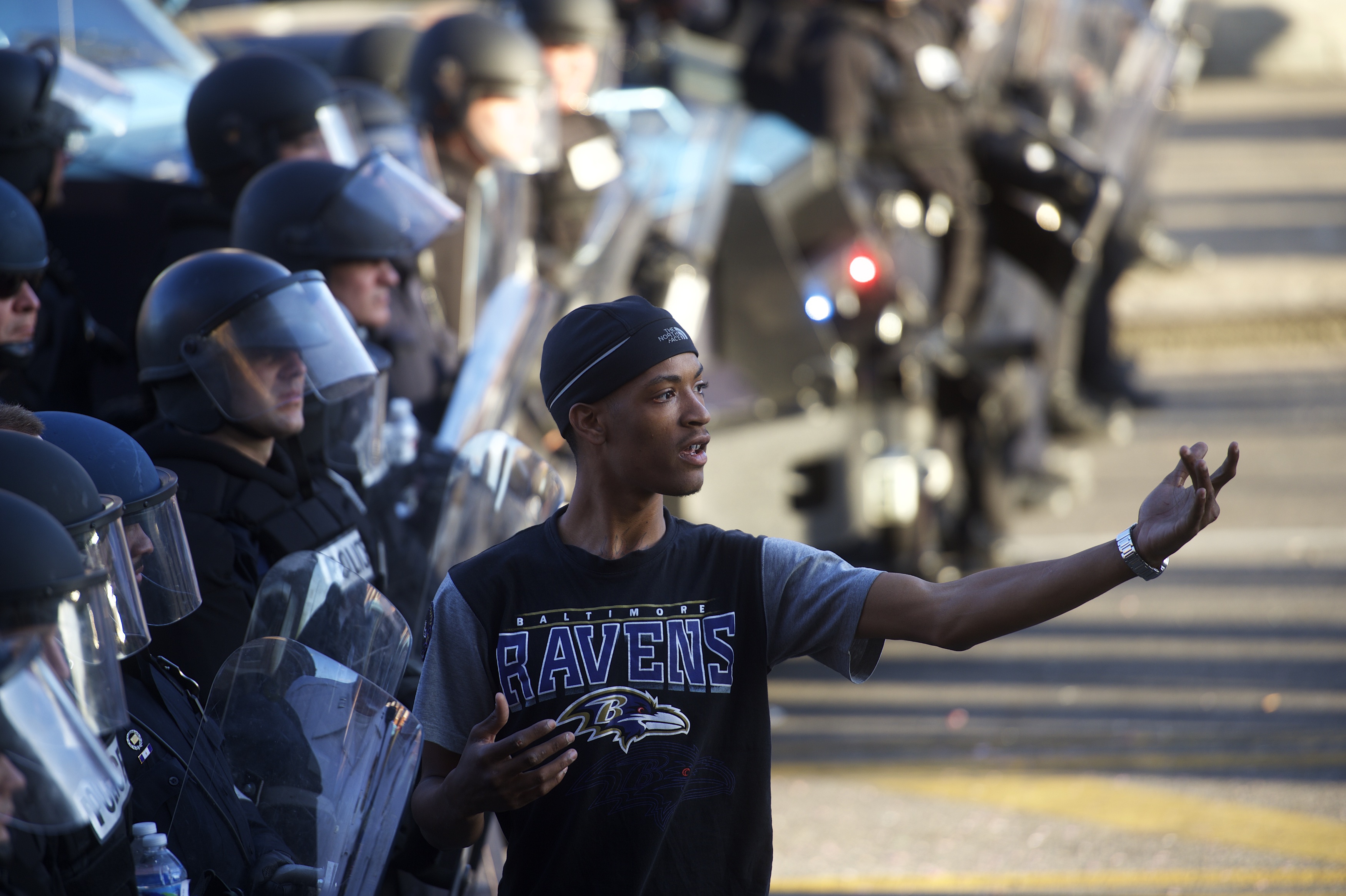
A protestor beckons to a friend to join him the afternoon after citywide riots over the death of Freddie Gray. (Getty)
The police line at North and Pennsylvania avenues began to slowly move forward toward the remaining protesters at about 10:15 p.m. Some people began to throw objects, including bottles at the officers, but those people were pushed back by others.
Smoke canisters were later thrown by police, and some protesters threw the canisters back at the officers.
The scene was mostly cleared, with only media and police left, by 11 p.m. Pockets of protesters and juveniles remained throughout the city, police said.
Here’s some of what happened in the hour after the curfew went into effect:
3. Police Made Arrests Before the Curfew Went Into Effect

A protester lies in front of a police barricade blocking the exit of a vehicle. (Getty)
Police began to arrest potential “agitators,” before the curfew went into effect. Police tweeted details of that operation.
A total of 10 people were arrested in the city, Police Commissioner Anthony Batts said.
One officer was injured:
4. The Media Is Allowed to Remain on the Streets
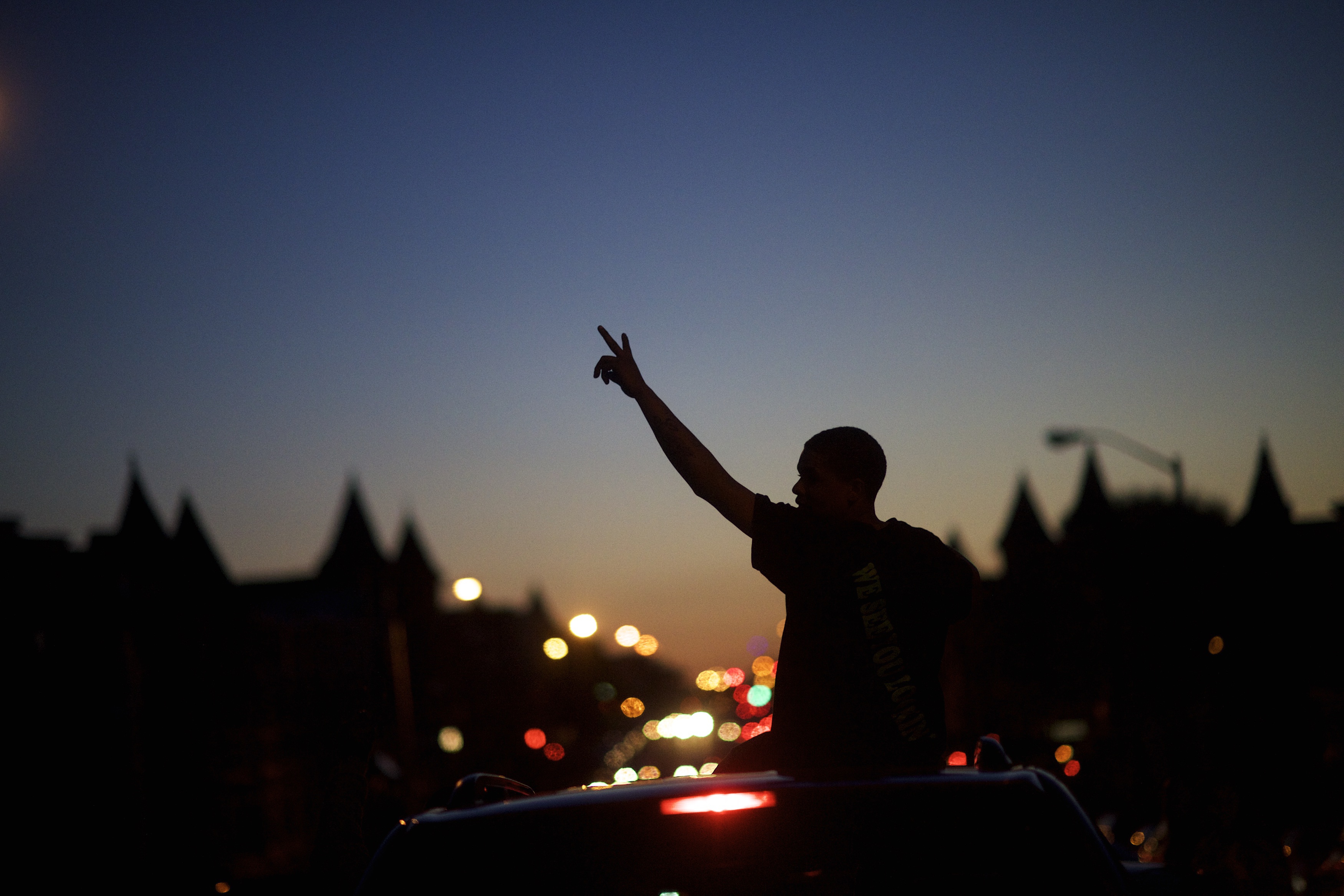
Young people in cars drive towards a phlanx of Baltimore riot police honking their horns and raising their hands with peace signs. (Getty)
Many of the people remaining on the streets are members of the media, according to live video from CNN. But police have said that the media is exempt from the curfew.
5. The Investigation Into Gray’s Death Is Still Ongoing

(Getty)
Six Baltimore police officers have been suspended while the investigation is ongoing.
Gray was arrested April 12 by four officers outside a public housing complex. Police have not yet said why Gray was arrested. Police said four bicycle officers tried to stop Gray for an unspecified reason and he ran from them. They caught him and detained him while waiting for backup.
Bystanders captured the end of his arrest on cell phone video (watch it above) as he was loaded into a police transport van. An ambulance was called to the police station 30 minutes later to take Gray to a hospital.
Police said the video does not show any use of force by the officers, according to The Associated Press. Witnesses can be heard screaming at the officers, saying Gray’s legs looked broken as the officers dragged him to a transport vehicle.
According to charging documents acquired by the Guardian, police claim Gray was injured while being transported to the Western District headquarters in the van, not during the arrest, which was made without force, police claim.
Mayor Stephanie Rawlings-Blake said on Twitter on Sunday, “Right now we are still collecting details surrounding this incident, but I want our residents to know that we will get answers.”
Rawlings-Blake said on CNN that the officers possibly facing criminal charges or discipline have not yet been interviewed because of Maryland’s Law Enforcement Officers’ Bill of Rights. According to the Baltimore Sun, officers are not allowed to be questioned until days after the incident.
Police Commissioner Anthony Batts said at a press conference that “all lives matter,” after issuing sympathies to Gray’s family.
Officials said a task force will review the incident including training and lab personnel, homicide investigators and force investigation, according to the Baltimore Sun. An independent “blue ribbon” panel will also review the case against the officers after State’s Attorney Marilyn Mosby decides whether to file criminal charges.

